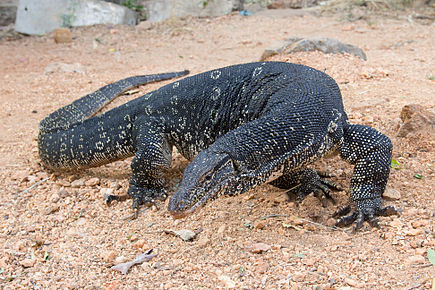Type the name of the breed you're looking for below
[wpdreams_ajaxsearchlite] Don't see the breed your're looking for? Click here and let us know!
Water Monitor
| Place of Origin and Range | The Water monitor is a large lizard native to South and South-east Asia. Water monitors are one of the most common monitor lizards found throughout Asia, and range from Bangladesh, Sri Lanka and India to Indochina, the Malay Peninsula, and various islands of Indonesia, living in areas close to water. |
| Description | They are the world's second-heaviest lizard, after the Komodo dragon. Their bodies are muscular, with long, powerful, laterally compressed tails. Colour from olive grey or olive black with an orange blush on the chin face and neck, to nearly black with regular cross rows of yellow spots. The nostrils are equal distance from the tip of the snout and the eyes. Lips are dark barred. |
| Morph Patterns Available | Yes |
| Adult Size | Can grow up to 8 feet (2.4 m) |
| Accommodation | These monitors live in rocky habitat. Be sure to secure any rocks in the cage before adding substrate to prevent injury to your monitor from being crushed by shifting rocks. They require large enclosures, temperatures around 100 °F (37 °C). Include a water dish large enough or your monitor to submerge and regulate temperature, Along with plenty of hiding spots. Two adults should be given no less than 100 square feet to roam. A dedicated room would be best. |
| Lifespan | Can live up to 14 years |
| Feeding / Diet | Their main foods in captivity are whole prey, such as mice, rats, snakes, lizards, freshwater mollusks, small birds, large roaches, crustaceans, fish, and eggs. A varied diet with dusted insects, crayfish and other low fat foods is by far the best, but they will readily eat mice. |
| Other Considerations | In Nepal it is a protected species in Chitwan National Park under the Wild Animals Protection Act of 2002. In Hong Kong, it is a protected species under Wild Animals Protection Ordinance Cap 170. In Malaysia, this species is one of the most common wild animals around, with numbers comparable to that of the population of macaques there. Although many fall prey to humans via road kill and animal cruelty, they still thrive in most states of Malaysia, especially in the shrubs of the east-coast states such as Pahang and Terengganu. |



